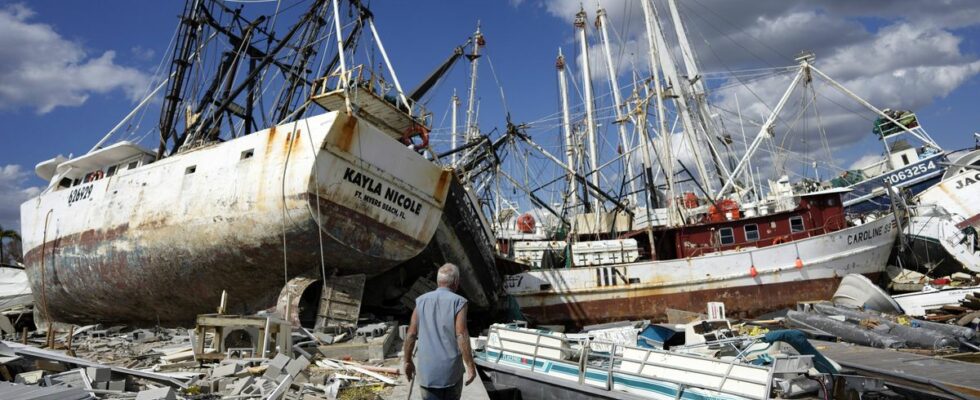The year 2022 will have been another year marked by natural disasters. Although smaller than in 2021, the damage bill is estimated at 270 billion dollars, according to an estimate presented on Tuesday by the reinsurer Munich Re. The previous year, the overall losses had been 320 billion, according to the estimate of the German group. Insured losses have remained stable at 120 billion dollars, according to Munich Re’s balance sheet. Like 2021, 2022 is thus the most expensive balance sheet in history after 2017 (146 billion dollars), according to the reinsurer.
Natural disasters killed some 11,000 people worldwide last year, after 9,320 in 2021, according to this company. The insured share of claims appears significantly higher than in past years, with an average of $97 billion calculated between 2017 and 2021. North America still dominates the claims statistics, with the United States accounting for almost all $150 billion in estimated losses.
Hurricane Ian tops the list of disasters
Hurricane “Ian”, which hit the west coast of Florida in late September and swept across the continent with winds of nearly 250 kilometers per hour, is easily at the top of the world disaster rankings. The loss toll stands at about $100 billion, of which about $60 billion was insured. Ian was thus the second costliest hurricane in history after Katrina which devastated Louisiana in 2005.
The heaviest death toll was due to flooding resulting from very heavy monsoon rains in Pakistan, which claimed 1,700 lives. Direct damages, estimated at at least $15 billion, were virtually uninsured. Flooding in southeastern Australia in February and March cost insurers $4 billion out of a total loss of about $6.6 billion.
A drought difficult to quantify
In Europe, drought caused indirect damage that is difficult to quantify, while in France and Spain violent hailstorms caused billions in damage.
In 2022, “La Niña” weighed “for the third year in a row” on disaster statistics, according to Ernst Rauch, director for climate at Munich Re. “La Niña” is an episodic weather anomaly in the Pacific, responsible for cooling conducive to heavy rains. It increases the likelihood of hurricanes in North America, floods in Australia, droughts in China and monsoon rains in South Asia.

